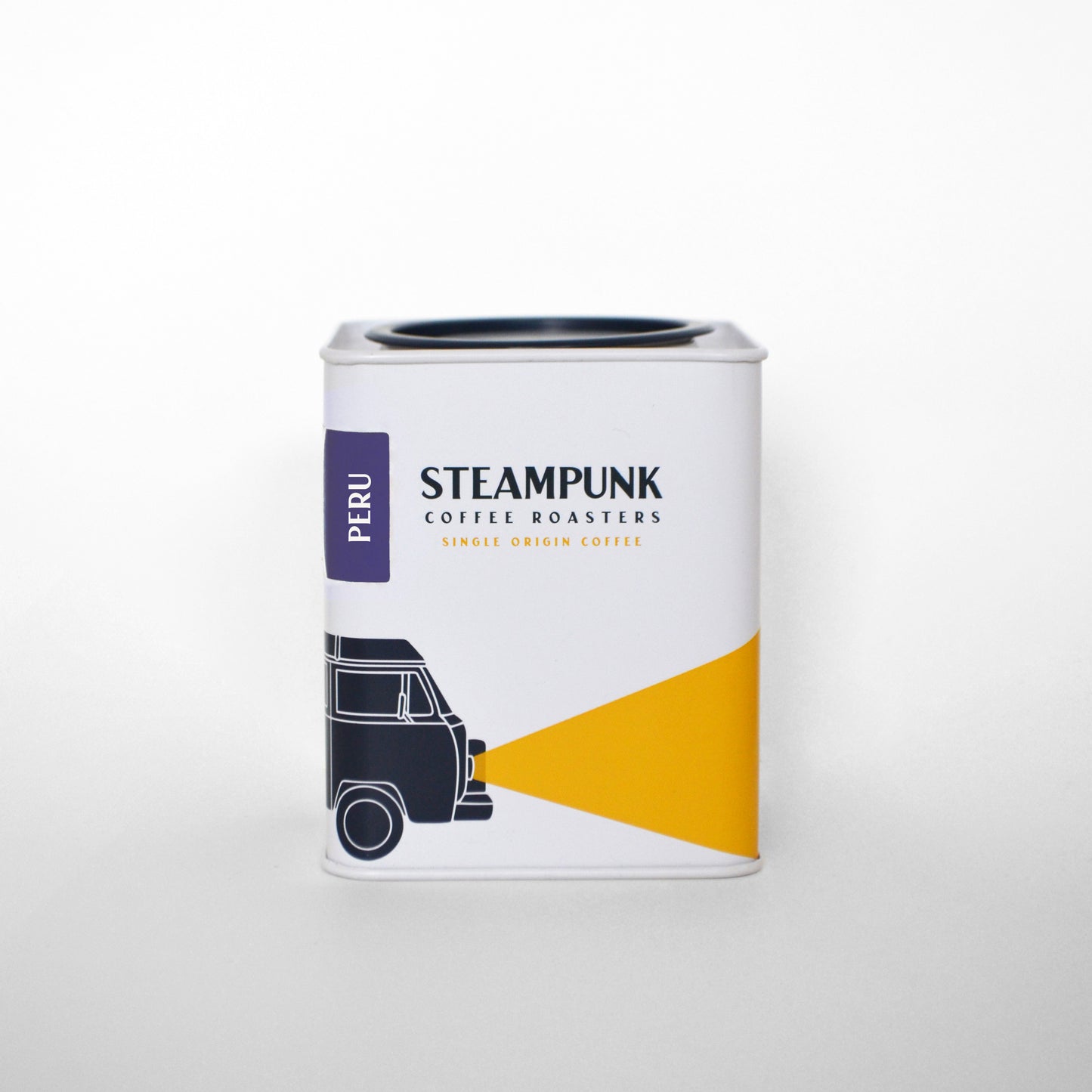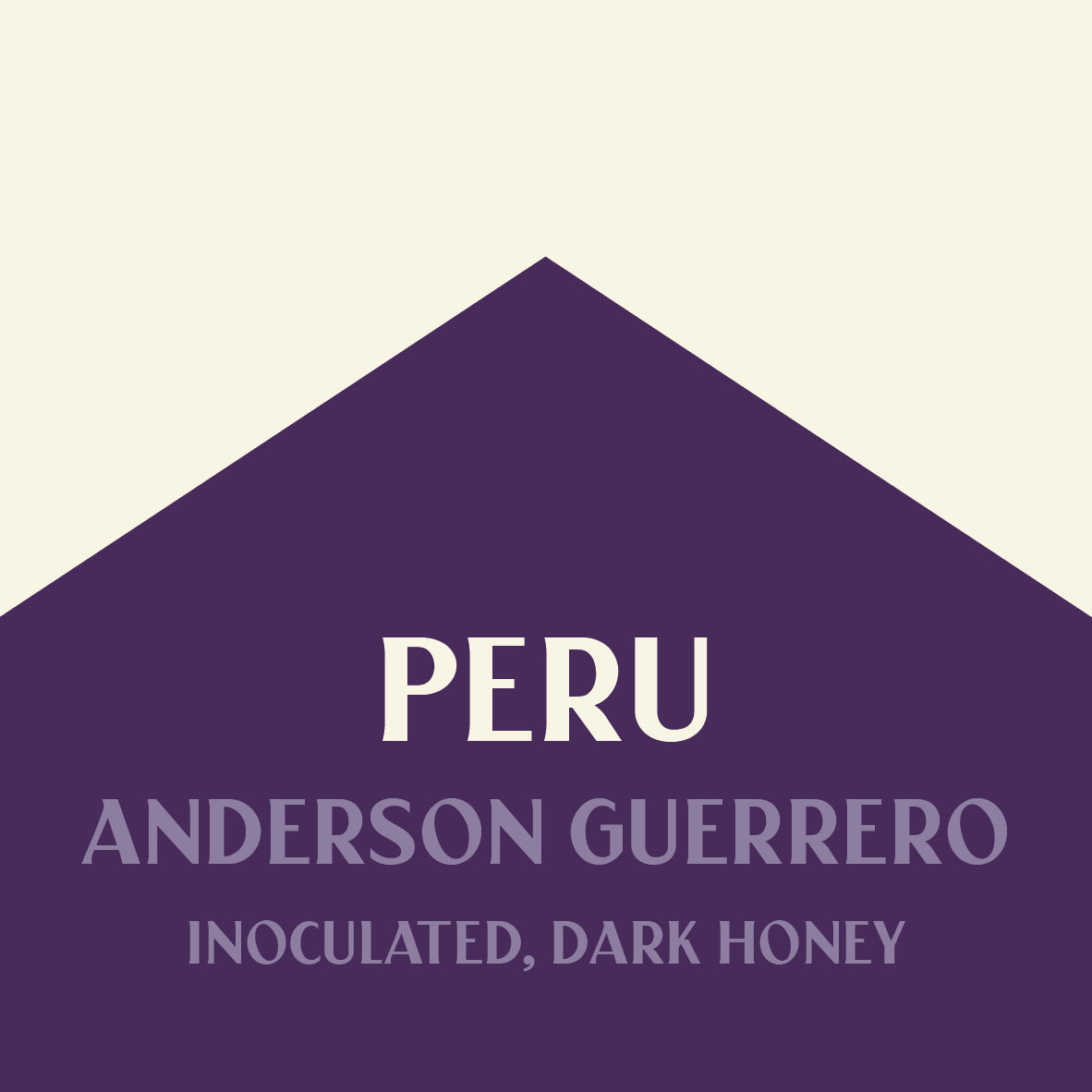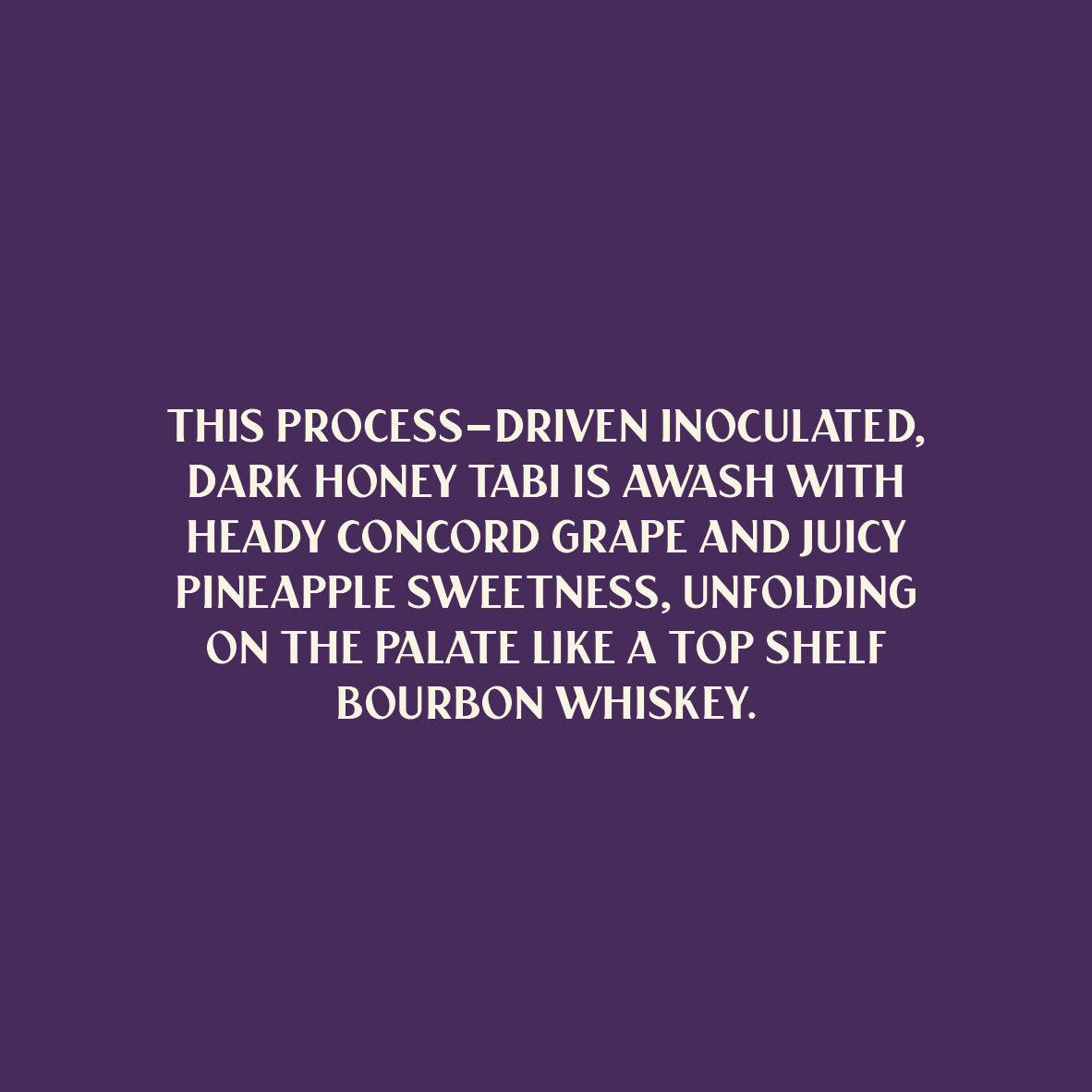Steampunk Coffee Roasters
Peru Anderson Guerrero
Peru Anderson Guerrero
Couldn't load pickup availability
Region: Cutervo, Cajamarca
Altitude: 1,800 m.a.s.l.
Variety: Tabi
Processing: Inoculated, dark honey
Tasting Notes: This process-driven inoculated, dark honey Tabi is awash with heady Concord grape and juicy pineapple sweetness, unfolding on the palate like a top shelf bourbon whiskey.
This coffee was grown by Anderson Guerrero who, along with his father, Fernando, owns Los Manantiales, a 50-hectare farm in Perlamayo, Cutervo. Manantiales means “natural spring” and the name refers to the many springs on the property. The Guerrero family started their farm in 2018 with a vision of a farm very different to the traditional coffee farms in Peru. They developed a fertilisation plan based on a soil analysis, planted rows with more space between the plants and established innovative processing practices. Anderson and his dad are passionate about quality, which shows in the careful fermentation and processing of their coffees. They mostly produce honey and natural process coffees, since these methods give the most fruity results in the cup. Traditionally, all Peruvian coffees are washed, so these methods set them apart.
This standout lot is honey processed, which means some mucilage is left on the parchment for drying. Anderson also took an extra, more experimental, step to make this coffee, called inoculation. The freshly picked and cleaned cherries were fermented in barrels for 24 hours. During this time the coffee cherries soften and start fermenting, and a sticky juice, called mosto, collects at the bottom of the barrel. This mosto is separated and fermented again with sugar cane to form an inoculant for the next step of processing. The coffee is pulped, placed in bags along with the fermented mosto and left to rest for a couple of hours before it is spread out on raised beds where the excess water drains off and the coffee starts to dry. As the coffee dries Anderson moves it down the beds to prolong the drying period to between 15 and 20 days. Once it reaches a moisture content of ten percent, he bags it up and lets it rest for a few weeks before delivering it to the warehouse in Jaén.
The inoculation process is part of what gives this coffee such pronounced boozy and fruity notes. Interestingly, it didn’t taste as remarkable at first. Simon Brown, founder of Chacra, the importer that brought us this coffee, told us that when he and Anderson tasted the very fresh coffee they concluded that it was a bit of a failed experiment. Very fresh green coffee can often taste a bit metallic and flat with less sweetness and fruitiness. That seems to have been the case here, where it took the flavours a few months (the time it took to ship it from Peru to the UK) to open up.
The phrase “dark honey” was also new to us. Usually honey processed coffee is classified as white, red or black honey, depending on how much mucilage is left on the bean after pulping. If more of the sticky fruit is left on it creates a darker, black colour, while less makes the beans look reddish, and just a little means the beans are more yellow. But Anderson, along with Simon Brown, who is a producer in his own right at his innovative farm Las Etiopes, have found this system of nomenclature to be misleading. They refer to their honeys as either dark or light. Simon explained that the factor most correlated with flavour in honey process coffee isn’t the amount of mucilage left on the bean, but the weather during the drying period. Depending on how the coffee dries, a coffee pulped the same way can end up being light coloured and taste more like a washed coffee, or dark coloured, in which case it will have more of the fruity notes of a natural. So, rather than using the colour terms (yellow, red, black), they simply call them light honey or dark honey.
This coffee is the Tabi variety, which is a hybrid of Typica, Bourbon and Timor varieties. It was developed by the Colombian Coffee Research Center (Cenicafe) in the late 1950s and was specifically designed to combine the desirable traits of its three parent varieties including improved disease resistance and yield as well as a potential for high cup quality. Currently, Anderson has 5 hectares planted with Tabi. They sourced the seeds locally and originally believed them to be a disease resistant, more productive Red Bourbon. Later, genetic analysis showed the plants to be Tabi.
This coffee comes to us through the small importer Chacra, who is newly working in the UK and focused on top-quality Peruvian coffees. This harvest we secured two of their offerings: this lot, along with a fantastic Geisha variety lot. Chacra Coffee is the husband and wife team of Simon Brown and Merlith Cruz. They focus on exceptional varieties like Geisha and Wush Wush, along with innovative processing methods. They established Chacra, a Quechua word meaning “earth planted with seeds,” after they bought a parcel of land in Cajamarca to plant with coffee. While developing their farm, Las Etiopes, they also worked to build relationships with neighbouring producers. Eventually, Chacra began exporting the coffee they grew on Las Etiopes as well as lots grown by partner producers, selling to other importers in the UK. In the last year or so they’ve taken another step, importing these coffees themselves. Talking to Simon, it’s clear his experience as a coffee grower informs how he does things as an exporter/importer. He has personal relationships with the producers who grow the coffee he sells. We’re lucky to be some of their first customers in the UK.
A note about packaging
Our coffee comes packaged in beautiful and hard wearing tins. It is important to keep those beans away from air and light (see our blog post about coffee storage) and we think tins are the very best way of keeping those guys fresh.
Tins can of course be easily recycled (with other metals) but the very best and most environmentally conscious thing to do with them is to refill them. Find out how to refill or dispose of your Steampunk packaging HERE.
Share


















